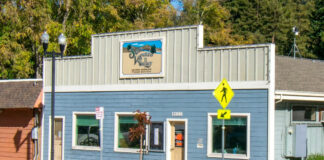
Early next year, Scotts Valley residents will weigh in on the lofty goal of maintaining a small-town character, while meeting the financial realities of operating a city.
The city’s general plan, a 20-year “vision document” last updated in 1994, serves as an overall guide for all areas of growth. Four community meetings — attended by the planning commission and/or city council — will serve as a foundation for the current update.
Key issues to be discussed include:
The Built Environment: How the city should develop in terms of land use, housing, business, and industrial.
The Natural Environment: Protection of open space and natural resources.
Mobility: The ability to move through the city in cars, public transit or on bicycle. This topic includes noise and air-quality impacts.
“It’s time for a conversation with the community,” said City Manager Jenny Haruyama.
The city will be publishing a web page dedicated to the general plan update process. The 1994 general plan can be viewed at scottsvalley.org/planning/plans.html
To say the city has changed its complexion during the past two decades would be an understatement. There’s almost one-third more people living in Scotts Valley now than 22 years ago, people are earning 45 percent more in annual incomes and the cost of a single-family home has risen at an even faster pace, by 78 percent, in the same period.
Some residents believe that the city has reached its small-town character growth potential. Others opine that only through ongoing controlled growth the city can meet its fiscal responsibilities.
But one thing is sure, it costs a great deal of money to operate a city the size of Scotts Valley. Police, fire and road maintenance costs represent the majority of the city’s $9.8 million spending in 2015. On the revenue side, about $3.4 million (35 percent) is generated from sales tax, $1.1 million (11 percent) comes from property tax revenue, and $1.1 million (11 percent) from transient occupancy taxes (hotels).
The city is counting on hotel tax income to increase after The Lexington Hotel under construction on Scotts Valley Drive, the proposed Marriot extended-stay hotel off Granite Creek Road, and the 1440
Multiversity retreat center at the former Bethany College site are completed.
“Hotels will be the economic driver for the city,” said Vice Mayor Randy Johnson during a recent candidate forum. “They’re the best investment you can make to provide services.”
But Haruyama stressed that a holistic view of all components of city growth is of prime importance. “Revenue is important,” she said. “But it can’t be the be-all and end-all.”
The city hired Kimley-Horn and Associates, Inc. in 2014 to guide the updated general plan process for $631,665. With 2,500 staff members in more than 75 offices across the United States, Kimley-Horn offers design and planning services in a wide range of disciplines: transportation, aviation, energy, environmental services, land planning, landscape architecture, parking, roadways and bridges, transportation, transit, technology and water services.
The Housing Element to the existing general plan was updated and adopted in March 2016.
The general plan update is being funded through developers’ fees, levied with each building permit filed with the city. For every $1,000 value of a construction project, the developer pays $4.70 into a general plan update account.
City officials say they expect the general plan to be updated sometime in 2018. Dates and times of general plan community meetings will be announced in the Press Banner when they become available.












